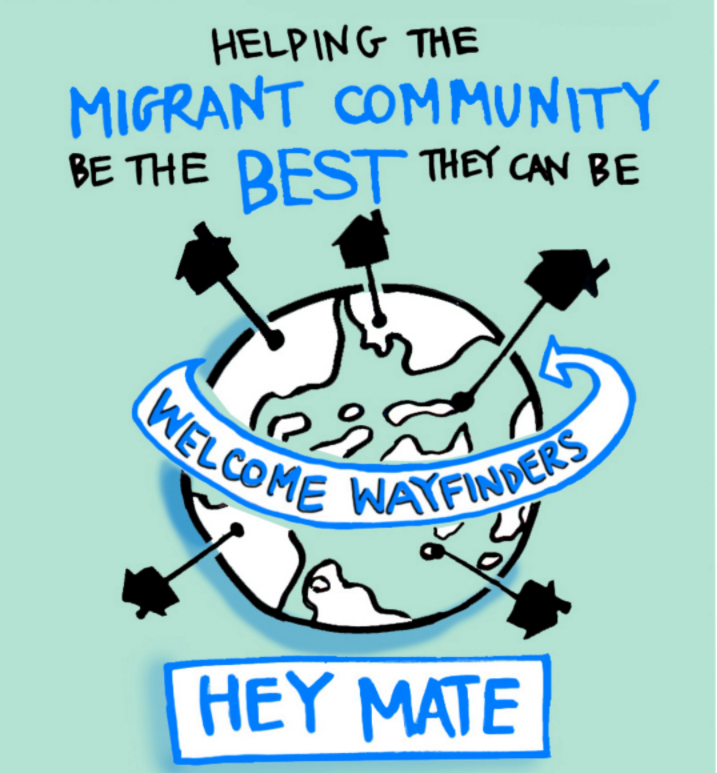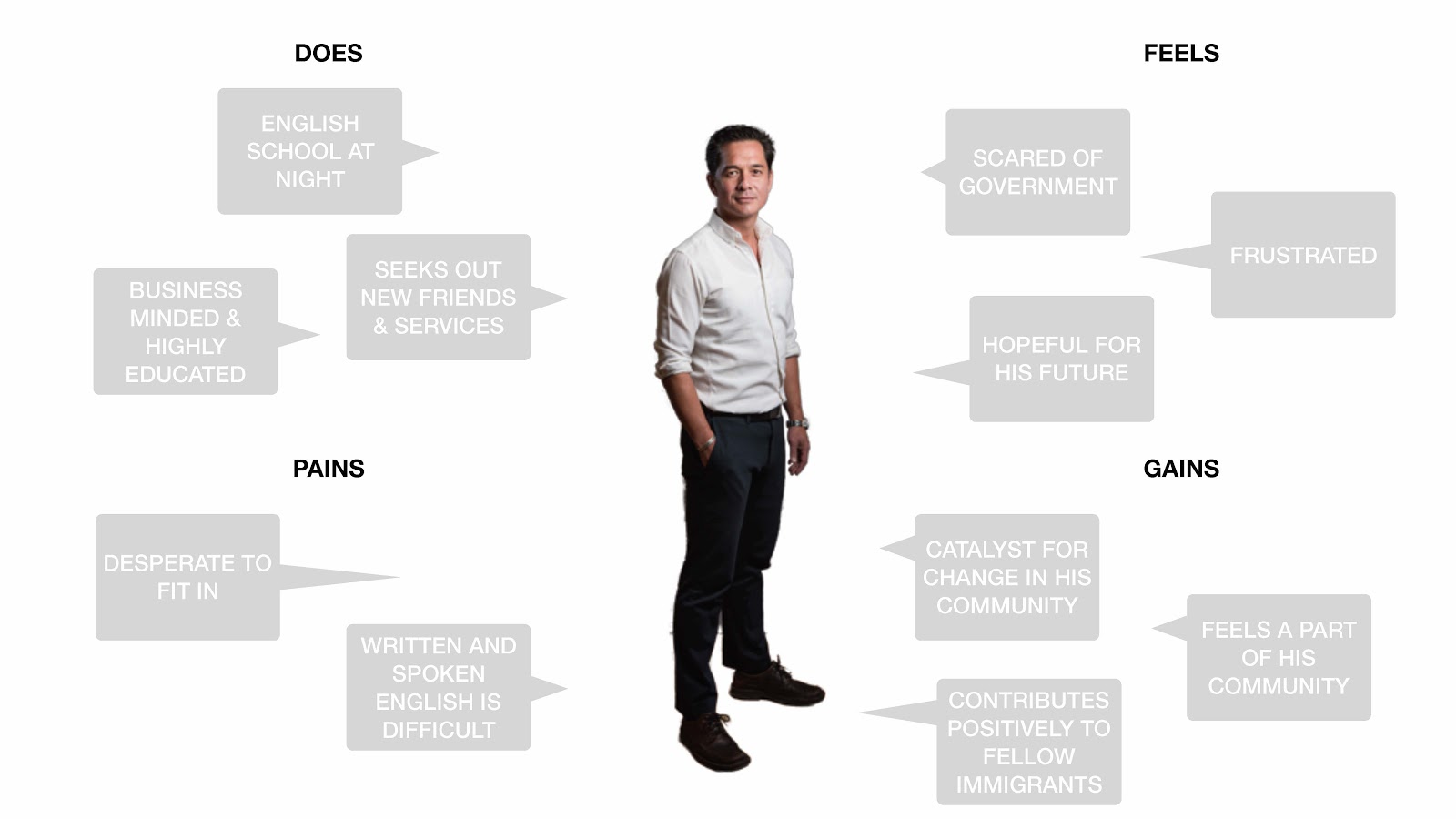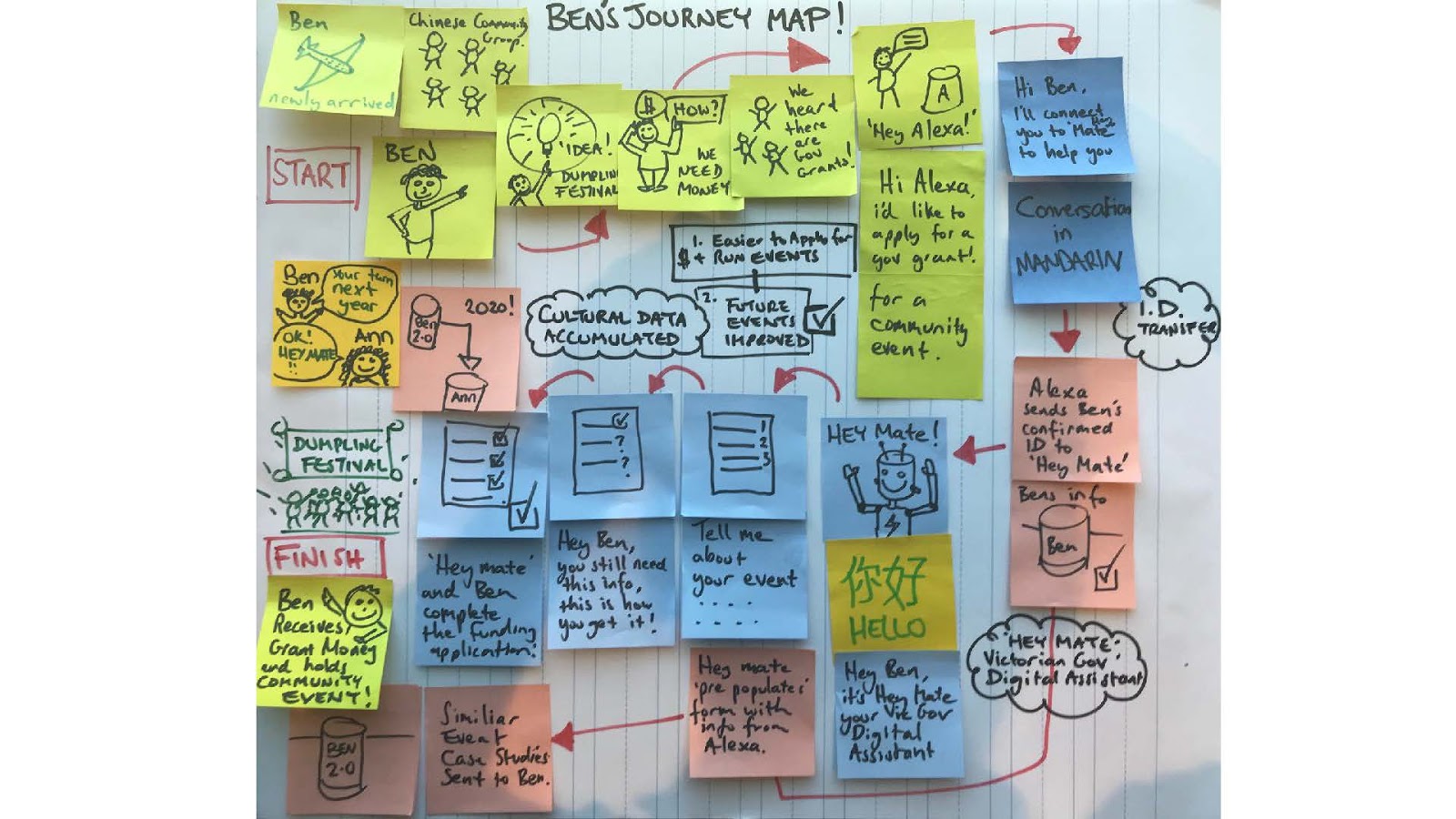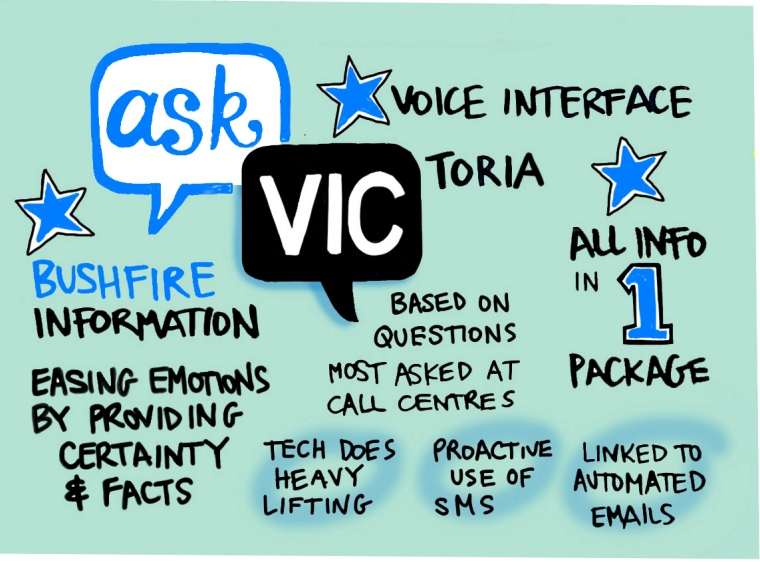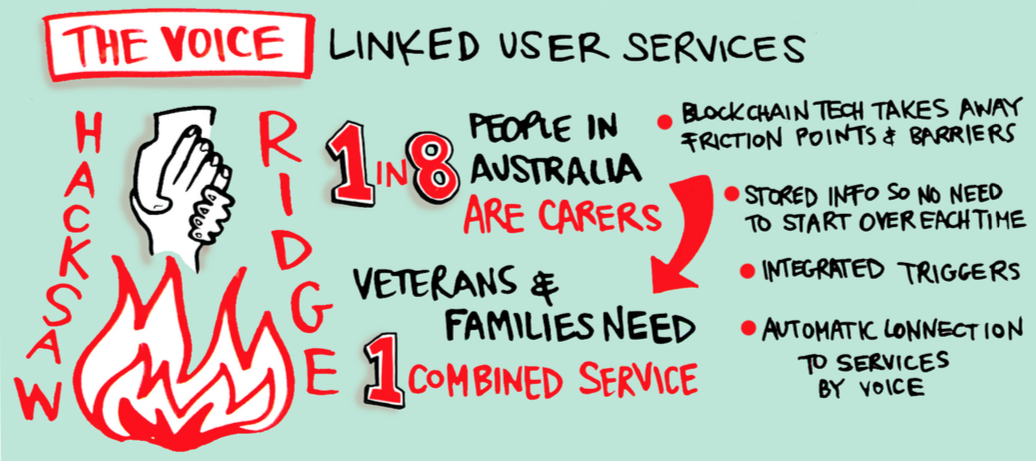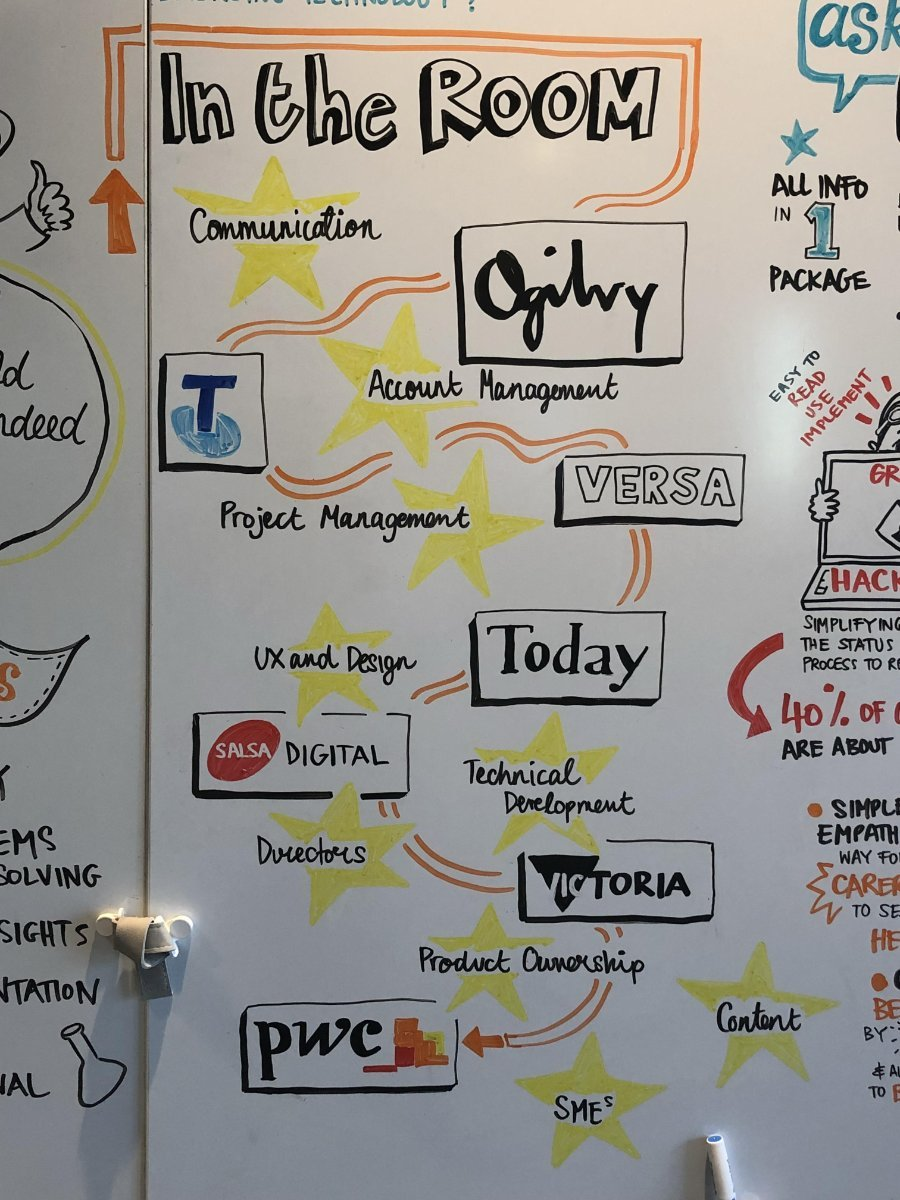
Melding of the minds for Voice Victoria
The Victorian Department of Premier and Cabinet (DPC) is a thought leader in all things technology. DPC has a skillful internal team across strategy, management, technical and operations. Not surprisingly this team has the foresight to understand the power of community and, in particular, the power of innovation — the hack premise if you like. If a group of motivated practitioners are given a particular group challenge to solve, the resulting ideas and solutions can be truly remarkable.
DPC organised such a group, specifically looking at DPC’s application of voice into the future. They set a voice challenge, giving invited participants one day to demonstrate and communicate concepts. Ideas from the day enabling DPC to seed their vision, strategy and pathways for delivery of voice services to Victorian citizens. Salsa was honoured to be invited into the group, forming part of DPC’s Innovation Hack with participants from Versa, Telstra, PWC, Ogilvy and others.
Innovation Hack - Participants
Support from team VERSA
The team at VERSA ( ) were great on the day supplying the expertise of their team. They also compiled this groovy video: .
The challenge
The specific challenge set by DPC was:
“People often need to find government information in times of high personal stress but being in a stressful state of mind reduces your ability to absorb and process complex information.
How might we enable all Victorians to better find, understand and apply the information they need from government using voice and virtual assistant emerging technology?”
DPC used three reference scenarios to further frame the application of voice and provide a context for groups to craft solutions.
These reference scenarios were:
John's wife is desperate to get help for her husband. He is very despondent and won't engage in finding the help he needs. She must work on his behalf to collect the information and navigate the maze of options available. She feels like people won't help her in the same way as if her husband was making the inquiry.
Kate is blind. She is very clever and adaptive using screen reader technology to access information online but it is a learning curve with each new website. She has to invest time to learn her workarounds. Kate feels most frustrated when the design of a website changes unexpectedly and she has to relearn her way around the site.
Ben is a new migrant and learning English at night school. He receives an email with an update on a grant application he recently made for his community group. It is hard for him to understand what the government is asking from him. He panics that he has done something wrong and will miss out on the grant money. He phones the customer contact centre in a state of distress.
Each Innovation Hack group considered the overarching challenge and selected one of the reference scenarios.
The process
The high level process to arrive at a solution was:
Form a group — Salsa was represented by five of its key staff. We resisted the temptation to form a Salsa group and rather spread Salsa folk among the groups. This ensured we spread our contribution and gave us a better cross section of ideas.
Select scenario — once in groups, the challenge was broadly discussed and a specific scenario selected.
Ideas sessions — the first step in addressing the challenge was an ideas sessions, or ideation session. Typically this process involved understanding the reference scenario from a user’s perspective and brainstorming ideas where voice may assist their challenges.
Locking onto a purpose — the next step was to turn ideas into purpose and capabilities. The selected scenario and idea(s) were tested in a context of:
How is the selected scenario addressed by application of voice?
What will the reference user(s) be doing before, during and after interacting with the voice solution?
What would the reference user obtain from the voice solution that they could not obtain by other means?
Flowcharting a solution — the voice interaction model was teased out using a flow chart of the user process, looking for pathways and applications of voice in the user journey. Typically this involved blending traditional technologies such as email and SMS and potentially offline/batch operations with voice support.
Scripting — voice is an entirely new interaction paradigm. Voice assistance requires specialist disciplines to design well. Voice experience (VX) now sits alongside skills such as UX and other immersive design methods to ensure the user is paramount. Thus scripting is very important to ensure a good VX. Tips for ensuring good VX include (as per article and validated by our own experience):
- Keep interactions brief.
- Write for how people talk, instead of how they read and write.
- Avoid repetitive phrases.
- Indicate when the user needs to provide information.
- Don’t assume that the user knows what to do or what will happen.
- Clearly present options.
- In general, provide no more than three choices at a time.
- Ask for information one piece at a time.
Prototyping — groups prototyped their solutions using . This software made it easy to create a voice interaction with an Amazon Alexa device (an Amazon Echo Dot was provided to each group). Essentially the flowchart at step 5 was encoded in sayspring using the scripting designed at point 6. Groups were able to easily iterate concepts and work to a final prototype for demonstration.
Pitching — groups then pitched their concepts/prototypes to a judgement panel consisting of:
- Susan Brown, Director, The Experience Centre, PwC Digital Services Managing Director, Girls in Tech
- Colleen Furlanetto, Chair, Victorian Disability Advisory Council
- Jithma Beneragama, Director of Digital Engagement, Department of Premier and Cabinet
Groups were scored by judges on Innovation, Desirability, Feasibility and Viability.
The results
There were some truly remarkable pitches. The artistic impression of the day — constructed as the day evolved — gives some insight to the day and the efforts of the groups.
Innovation Hack - Pictorial
Among the Salsa-contributed efforts were the following projects:
Hey Mate - voice assistance for English as a second language Australians
This group built a prototype to assist assimilation of Australians with English as their second language. Typical personas are very well-educated citizens who are made to feel marginalised due to no other reason than the nuances of the English language. Slang, jargon, English exceptions, nuances, Aussie’isms all combine to create uncertainty and a feeling of complexity and helplessness. Hey Mate was designed to bridge the gap and help users more easily connect with the wider community.
The group developed a persona for Ben based on input from a government community engagement representative in the team and connecting with Chinese immigrant friends for some rapid user research! Next the team completed an empathy mapping process to work out Ben’s contextual environmental considerations, pains and gains.
Taking those insights the group worked through a brainstorming triangle of usual ideas, different ideas and radical ideas and came up with their concept.
A channel-agnostic, culturally and data-powered, virtual assistant in the user’s native language to facilitate grants processes for community events.
‘HeyMate’ Salsa sauce
While technology and the use of voice played a major role in developing the group’s communication solution their key innovation was the realisation of the need to develop a cultural database to develop a continuously richer understanding of immigrants, their unique needs and cultural nuances.
askVicToria — a practical method of using voice to detangle uncertainty
This group used the first reference scenario, adapting it to consider a repeated use case prevalent in DPC’s call centre. Voice was used to assist the process of understanding the planning status of blocks of land that are to host prospective house builds. Changes in planning status, particularly with respect to bushfire zone amendments, creates anxiety and stress. The present process is largely manual for the call centre. Voice is able to streamline this process and add certainty to users.
Victorian Government grant checker
The ‘Grant HACKetts’ aimed to improve user understanding of grant notices given by government and simplify the process for finding the status of grant information. This included using simplified/native language in emails, alongside imagery to better convey a notice’s intent. The email would then provide direction to a voice-controlled assistant, which could be used for real-time checking of application status.
Hacksaw Ridge — using tech to assist Australian Veterans
For those facing mental health issues such as depression an action plan - even when well considered and composed using professional counseling and guidance - often has real barriers to adoption. Such barriers may mean the plans are not initiated, disrupted or abandoned.
Step-in new technologies such as virtual assistants that can help reduce such barriers and lessen friction points to make it easier for people to work through their challenges. The natural language capability of these devices has matured to such a level that they can now genuinely perform very practical and useful tasks.
The group focused on demonstrating natural language capability and its potential. For example, the partner of a veteran simply asked ‘My partner is a veteran. He is suffering from depression and he needs help.’ First response ‘Is he critical, would you like me to dial Lifeline for you?’ The natural language conversation then continues guiding the person through the various services across government and community groups that are available to help.
The veteran in question has worked through the process and they now have a schedule of therapy and rehabilitation actions. Google Home (via voice or mobile message) says ‘Hey John, it’s 9am and have taken your medication yet?’ or ‘Hey John, your doctor’s appointment is in 30 minutes, would you like me to call them so you can tell them you’re running late?’ or ‘Hey John, the local veterans community support group is meeting in 40 mins. It will take you 20 mins to drive there with current traffic conditions.’
The bigger picture
For DPC
The bigger picture for DPC is a better appreciation of the practical applications and limits of voice, plus more ideas to feed into their vision and strategy around voice and voice applications.
For Salsa
Salsa now has a better appreciation of voice and voice applications. Salsa sees voice as here and now rather than emerging. Voice will no doubt explode in use cases, however its application is present.
A seed has been planted, a vision of how we can someday (in the not too distant future) contribute, share, collaborate and ultimately open great voice experiences, voice designs and voice applications that lower the barrier even further for our government to connect to our people.
Salsa was excited to participate in the Innovation Hack and very much valued the networking opportunity. We extend our sincere thank you to DPC and all the hack participants.



